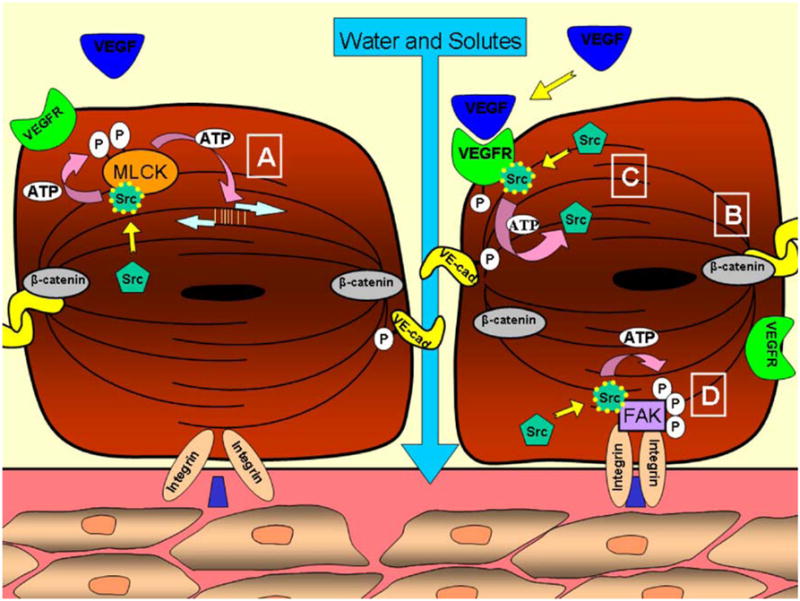Fig. 1.

Mechanism of paracellular transport in endothelial cells. Boxed A Activated Src binds to SH-2 and/or SH-3 regions of myosin light chain kinase (MLCK), leading to its phosphorylation and activation. Myosin-actin crossbridge formation ensues followed by cytoskeletal contraction. Boxed B VE-cadherin and β-catenin in resting complex formation. Upon binding of vascular endothelial growth factor (VEGF) ligand (boxed C), VEGFR undergoes trans-phosphorylation and binds Src at a SH-2 site, resulting in Src phosphorylation and activation. Src then phosphorylates VE-cadherin, resulting in complex dissociation and increased vascular permeability. Boxed D Engagement of integrins with extracellular matrix components results in auto-phosphorylation of focal adhesion kinase (FAK) and an SH-2-binding site to which Src binds. FAK then undergoes Src-dependent phosphorylation and activation at multiple sites, initiating downstream events related to actin assembly and focal adhesion turnover
